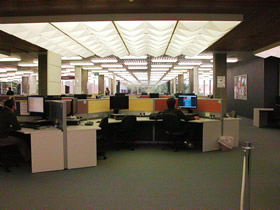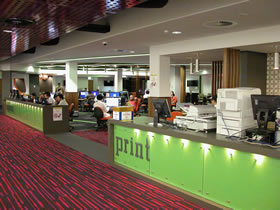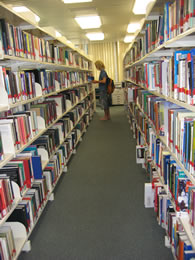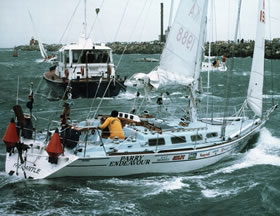
Electronic information
Journals
The availability of electronic journal titles and significant backsets from publishers such as ScienceDirect and JSTOR enabled the Library to provide clients with access to substantial collections not possible in the past. 14 In particular, in years when the exchange rate for the Australian dollar against the US dollar improved, the Library committed the additional funds to finance one-off purchases, including backsets of journals.
In 1990, the Library held about 5 000 journal titles and by 2004 this had risen to over 35 000. Library staff continued to consult with academic staff to ensure the journal collection met the University’s teaching and research needs. In 2008, a comprehensive journal needs analysis was undertaken which led to new titles being prioritised and purchased in stages as funds allowed. By the end of 2011, the collection included over 118 000 journals.
e-books
E-books offer many advantages to the Library and its clients. Multiple clients can access the same book at the same time, wherever and whenever they have suitable online access.
In mid 2004, the Library’s e-book collection comprised about 4 000 volumes, including reference works and books in e-Reserve. E-books were increasingly purchased from publishers in packages 15, rather than as individual titles. New models also emerged including a ‘try before you buy’ option in which the Library only purchased the e-book when at least one client had accessed the work for more than five minutes. By mid-2012 the Library's e-book collection had in excess of 170 000 titles.
e-Reserve
The Library’s e-Reserve project, which commenced in 2000, had expanded to the extent that the database included over 10 000 items some four years later. By mid 2005, all print photocopies were able to be withdrawn from the reserve shelving.
Library staff also took on the systematic digitizing of out of print, high demand books for access via e-Reserve.
Additionally, a project to convert a large number of Open University print readers for e-Reserve access was completed in 2006.
From 2007, Library staff worked on the University’s Curriculum 2010 project team to ensure that, wherever possible, required course readings would be identified for inclusion in e-Reserve.
Digital theses
The Library was a key contributor to the Australian Digital Theses project from the project’s inception in 1997. Following representations from the Library and the Office of Research and Development, the University instigated the mandatory submission of PhD theses from 2005. This was a boost to the program and saw the number of Curtin theses increase from about 500 in mid 2005 to around 1 300 in mid 2012.
Digital archives
Building on the expertise gained in establishing the digital archive of its John Curtin Prime Ministerial Library, a number of other archival collections were developed and promoted as digital archives from 2006:
* Papers of past WA Premier Dr Geoff Gallop
* Papers of past WA Premier Dr Carmen Lawrence
* An online bibliography of noted author Elizabeth Jolley
* An online archive of Project Endeavour relating to lone yachtsman Jon Sanders' 1988 triple circumnavigation of the world
 Computers for client use on level three, 2008.
Computers for client use on level three, 2008.  Clients using technology in the iZone, 2008.
Clients using technology in the iZone, 2008. A student using the reserve collection in 2007.
A student using the reserve collection in 2007.Wherever possible, material in reserve was made available in digital format via e-Reserve. What remained in the physical collection was primarily books.
 Jon Sanders aboard Parry Endeavour.
Jon Sanders aboard Parry Endeavour. Image from Project Endeavour archival collection: Photograph album and scrap book compiled by John Penrose, 1986-1988. CUL00040/1.